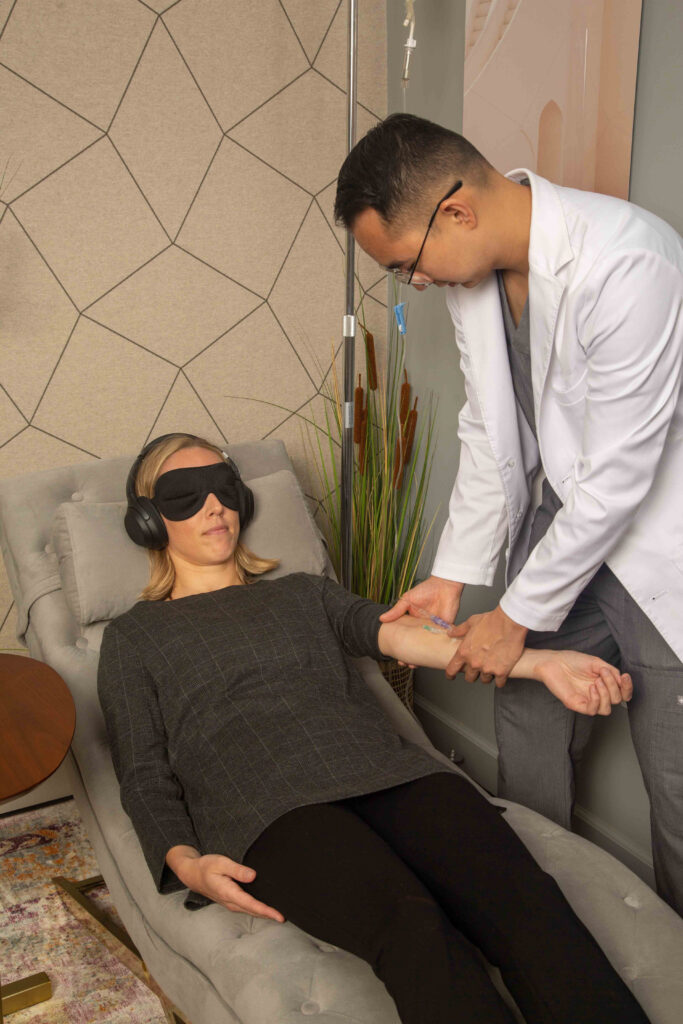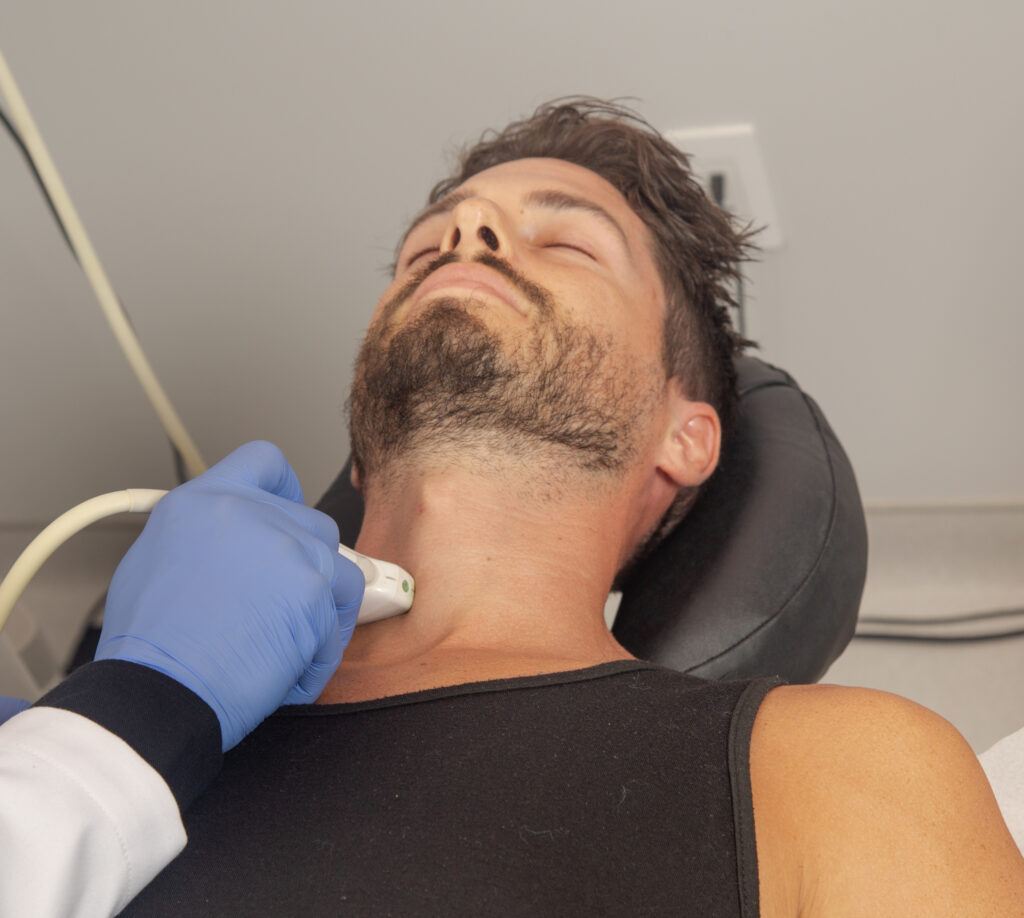Written by: Tabitha Block, Jonathann Kuo MD
What is long COVID?
Long COVID, formally known as Post-Acute COVID-19 Syndrome (PACS) , is a range of symptoms that can last weeks or months after being infected with the SARS-CoV-2 virus. Some individuals infected with COVID-19 experience new, returning, or ongoing health problems as a result of an immune response caused by the SARS-CoV-2 virus. Most commonly, patients with long COVID experience combinations of symptoms that may include difficulty breathing or shortness of breath, tiredness or fatigue, post-exertional malaise, difficulty concentrating (also known as “brain fog”), cough, chest pain, headache, heart palpitations, joint or muscle pain, diarrhea, sleep problems, fever, dizziness, rash, and changes in smell or taste (1). Depending on the predominant persisting symptoms, long COVID can be categorized into ten broad groups: long COVID cardio-respiratory syndrome, long COVID fatigue syndrome, long COVID neuropsychiatric syndrome, long COVID gastrointestinal syndrome, long COVID hepato-biliary syndrome, long COVID musculoskeletal syndrome, long COVID thromboembolic syndrome, long COVID autoimmune syndrome, and long COVID genito-urinary syndrome (1).
The physiological causes of long COVID progression have yet to be fully understood, but research has indicated that extent of organ damage, time required for organ recovery, persistence of chronic inflammation, and some psychological symptoms like post-traumatic stress may contribute to the persistence of symptoms (1-3). The severity of initial COVID infection may be associated with the risk of developing long COVID, but unfortunately, long COVID can affect any individual who has been infected with the SARS-CoV-2 virus, even if their initial symptom presentation was mild or asymptomatic. The majority of patients who experience mild COVID symptoms will have negative PCR results (microbiological recovery) within 7-10 days, but patients with long COVID will present with various symptoms despite microbiological recovery. Further, clinical studies show that 87% of recovered individuals who were previously hospitalized due to severe COVID symptoms experience the persistence of at least one symptom for over 60 days (2). In addition to individuals who experience severe disease, women and individuals with comorbidities have an increased risk of developing long COVID (1).
As long COVID is a new disease that can affect many different organ systems, treatment of long COVID can be extremely difficult. Treatment plans for patients with long COVID are typically multi-disciplinary and focus on symptomatic management and treatment of underlying problems (4). Some symptoms, such as cough or fever, can be managed using over-the-counter medications like acetaminophen, but other symptoms, such as brain fog, are difficult to treat with traditional protocols. Despite the use of traditional treatments, many long COVID patients experience debilitating symptoms that can delay their return to work and diminish quality of life. This disease can have a significant social and economic impact on individuals struggling with long COVID symptom management. As such depending on your needs, we can design an individualized treatment plan that targets your long COVID symptoms. These treatment options include Stellate Ganglion Blocks, High-Dose Vitamin C and Glutathione IV Infusions, NAD+ IV Infusions, and Exosome Infusions.
What are Stellate Ganglion Blocks?
Stellate Ganglion Blocks (SGBs) are minimally-invasive procedures used to treat many types of sympathetic nervous system-related disorders, including post-traumatic stress disorder (PTSD), complex regional pain syndrome, and ventricular arrhythmia. The stellate ganglion (SG) is a nerve cluster associated with the activation of the sympathetic nervous system, the branch of the nervous system that is responsible for initiating “fight-or-flight” responses to impending danger and fear. The SG is located in the upper neck and coordinates with the central nervous system to produce sympathetic physiological responses. Under normal conditions, sympathetic responses are initiated following appropriate stimuli, such as an increase in sweating and heart rate when running from a bear or while slamming on the brakes to avoid a car accident. The sympathetic nervous system is essential to normal functioning and survival because sympathetic responses liberate extra energy and equip the body to deal with emergency situations. Despite this vital role, overstimulation or dysregulation of the sympathetic nervous system can result in altered SG signaling and can lead to dysfunctional or inappropriate physiological responses (also referred to as dysautonomia) (5). Dysautonomia is abnormal activity of involuntary body functions that are regulated by the sympathetic nervous system, such as heart rate, breathing and digestion. The SG carries sympathetic signaling to many body regions and organs, including the head, neck, upper limbs, thymus, heart, lungs, lacrimal gland, salivary gland, thyroid gland and pineal gland (6). As such, dysautonomia can have detrimental effects on myriad organ systems and can severely impair quality of life.
Why do Stellate Ganglion Blocks help treat long COVID?
Many neurological long COVID symptoms, such as fatigue, anosmia, headaches and hypoxia, that fail to respond to traditional treatment protocols are associated with dysautonomia (7). As long COVID may persist over weeks or months, persistent dysregulation of sympathetic signaling may potentially contribute to or exacerbate long COVID symptoms (8). Although the direction of causation remains unclear, research indicates that there is a relationship between long COVID and dysautonomia. This relationship underscores how Stellate Ganglion Blocks (SGBs) can be effectively implemented in the treatment of long COVID.
SGBs work by anesthetizing the physical source of sympathetic overdrive, the stellate ganglion nerve cluster (SG). As such, SGBs are able to effectively “reset” the sympathetic nervous system and restore normal biological function, providing rapid and significant symptom relief of even the most severe sympathetic symptoms. SGBs have been widely shown to provide significant and long-lasting relief for patients with PTSD and anxiety who experience sympathetic overdrive symptoms (9-13). SGBs have also been used to treat sympathetic nervous system-related conditions of the head, neck and upper body ranging from cardiac applications to complex regional pain syndrome (14-15). Recent research indicates SGBs can be used to safely and effectively treat symptoms of long COVID (16). By targeting the root cause of dysautonomia in long COVID patients, SGBs may reduce sympathetic hyperactivity and increase cerebral blood flow, providing patients with significant symptom relief.
Sympathetic innervation plays a vital role in the communication between the immune system and the nervous system and dysregulation of this relationship can have serious health consequences (16). Research has shown that, in general, feedforward loops (physiological mechanisms that result in activation of a biological pathway) are essential to the body’s ability to elicit a rapid immune response to infection, and feedback loops (physiological mechanisms that result in inactivation of a biological pathway) may mitigate inflammation levels to prevent inflammation-related damage (16). As such, a balance between sympathetic feedforward and feedback loop signaling is required for normal communication between the immune and nervous systems. Many pathologies disrupt this relationship, promoting sympathetic responses (e.g., elevated cytokine and catecholamine levels) and subsequent inflammation-related problems (16). Importantly, the vagus nerve, a nerve that is responsible for counteracting sympathetic responses (i.e. a parasympathetic nerve), communicates information about pro-inflammatory biomarkers to the brainstem (16). During elevated sympathetic signaling, the brainstem responds by integrating this information into behavioral responses (i.e. sickness behaviors), which closely resemble long COVID symptoms (16). Persistent hyperactivation of the sympathetic nervous system can physically alter the connection between the vagus nerve and the brainstem, leading to prolonged dysautonomia (16). Research suggests that continued hyperactivation of the sympathetic nervous system may be at least partially responsible for persistent inflammation-related long COVID symptoms (16).
Similarly, prolonged dysautonomia is associated with impaired cerebral blood flow (CBF) in myriad conditions (e.g., myalgic encephalitis/chronic fatigue syndrome (ME/CFS) and postural orthostatic tachycardia syndrome) with clinical presentations that parallel many symptoms of long COVID (16). In general, impaired CBF causes a range of clinical symptoms such as cognitive dysfunction, impaired memory and attention, and reduced visual, gustatory or olfactory function (16).
Numerous case reports have demonstrated significant long COVID symptom relief following SGB treatments (16). Anesthetizing the physical source of sympathetic hyperactivation (the SG) through SGB procedures may recalibrate the communication between the immune and nervous systems toward a pre-COVID balance and may effectively reduce long COVID symptoms (16). Similarly, SGBs may alleviate some neurocognitive symptoms of long COVID by increasing CBF and improving perfusion to brain structures involved in sensory perception or processing (16). Indeed, SGBs have been utilized for the treatment of anosmia for years prior to the COVID-19 Pandemic (17). Studies suggest that SGBs may be an effective treatment for dysautonomia-related long COVID symptoms and may provide long-lasting relief of anosmia and dysgeusia (16-17).
One recent case study demonstrating long COVID symptom relief following SGB treatments studied a 42-year old female who presented with long COVID symptoms eight months after the onset of her initial non-critical COVID course. This patient demonstrated significant and lasting symptom relief following two SGB procedures (16). The patient complained of many characteristic long COVID symptoms, including low oxygen saturation, debilitating fatigue, difficulty concentrating, mental fogginess, and diminished and altered sense of smell and taste (anosmia and dysgeusia, respectively). Following the initial SGB, the patient reported immediate ipsilateral improvement in anosmia and dysgeusia and significant improvement in concentration and mental clarity. Immediately after the second SGB, the patient experienced complete restoration of bilateral olfactory and gustatory function. At both the two week and 60-day follow up, the patient reported no change in these symptom improvements, suggesting SGBs provided significant and lasting relief of three long COVID symptoms: anosmia, dysgeusia and cognitive impairments (16).
Another recent case study reported on a 44-year old female who experienced long COVID symptoms for eight months prior to intervention with bilateral SGBs (16). The patient presented with significant cognitive impairment, dysgeusia, anosmia, stuttering speech, right sided paresis, memory deficits, impaired coordination, debilitating fatigue and inability to concentrate. Immediately following the first SGB procedure, the patient reported a significant improvement in anosmia and dysgeusia. At the two week follow-up, the patient reported a drastic resolution of stuttering speech and 75% improvement in all other long COVID symptoms. At the 60-day follow up, the patient reported durable restoration of olfactory and gustatory function, normal levels of fatigue, restoration of cognitive function, and absence of other long COVID symptoms (16).
The significant improvement of long COVID symptoms following bilateral SGBs described in these case studies indicate an important role of dysautonomia and cerebral blood flow in the pathophysiology of long COVID (16). As such, the application of SGBs in treating long COVID is extremely promising. SGBs have a well-established safety profile and current research suggests that SGBs may effectively reduce dysautonomia and neurocognitive symptoms in at least a subset of long COVID patients.
What happens during a Stellate Ganglion Block?
Stellate Ganglion Blocks are highly effective and safe minimally-invasive outpatient procedures performed under monitored care anesthesia (light sedation). Using X-ray fluoroscopy and ultrasound, your physician will guide a small needle into the neck region that contains the stellate ganglion nerve cluster. Once the needle position is confirmed, a local numbing anesthetic (e.g. bupivacaine or lidocaine) is injected into the stellate ganglion. The entire procedure is performed under ultrasound guidance and takes an average of 20 minutes to complete (13).
Successful SGBs will elicit a physiological response known as “Horner’s Syndrome” (16). Horner’s Syndrome may include facial flushing, ipsilateral ptosis (drooping of the eye on the same side the SGB was performed), meiosis (decreased pupil size), eye redness, reduced sweating and hoarseness (16). This response typically lasts between 4-8 hours and, in the vast majority of cases, will subside by the following day. Your physician will monitor you for evidence of Horner’s Syndrome for about 15 minutes after the completion of your procedure.
CITATIONS:
- Raveendran, A V et al. “Long COVID: An overview.” Diabetes & metabolic syndrome vol. 15,3 (2021): 869-875. doi:10.1016/j.dsx.2021.04.007
- Carfì, Angelo et al. “Persistent Symptoms in Patients After Acute COVID-19.” JAMA vol. 324,6 (2020): 603-605. doi:10.1001/jama.2020.12603
- Forte, Giuseppe et al. “COVID-19 Pandemic in the Italian Population: Validation of a Post-Traumatic Stress Disorder Questionnaire and Prevalence of PTSD Symptomatology.” International journal of environmental research and public health vol. 17,11 4151. 10 Jun. 2020, doi:10.3390/ijerph17114151
- Jiang Hj, Nan J, Lv Zy, Yang J. Psychological impacts of the COVID-19 epidemic on Chinese people: Exposure, post-traumatic stress symptom, and emotion regulation. Asian Pac J Trop Med 2020;13:252-9
- Lipov, Eugene G et al. “A unifying theory linking the prolonged efficacy of the stellate ganglion block for the treatment of chronic regional pain syndrome (CRPS), hot flashes, and posttraumatic stress disorder (PTSD).” Medical hypotheses vol. 72,6 (2009): 657-61. doi:10.1016/j.mehy.2009.01.009
- Moon HS, Chon JY, Lee SH, Ju YM, Sung CH. Long-term Results of Stellate Ganglion Block in Patients with Olfactory Dysfunction. Korean J Pain. 2013;26(1):57-61. doi:10.3344/kjp.2013.26.1.57
- Barizien, N., Le Guen, M., Russel, S. et al. Clinical characterization of dysautonomia in long COVID-19 patients. Sci Rep 11, 14042 (2021). https://doi.org/10.1038/s41598-021-93546-5
- Dani, Melanie et al. “Autonomic dysfunction in ‘long COVID’: rationale, physiology and management strategies.” Clinical medicine (London, England) vol. 21,1 (2021): e63-e67. doi:10.7861/clinmed.2020-0896
- Lipov, Eugene G et al. “Stellate ganglion block improves refractory post-traumatic stress disorder and associated memory dysfunction: a case report and systematic literature review.” Military medicine vol. 178,2 (2013): e260-4. doi:10.7205/MILMED-D-12-00290
- Lynch, James H. “Stellate ganglion block treats posttraumatic stress: An example of precision mental health.” Brain and behavior vol. 10,11 (2020): e01807. doi:10.1002/brb3.1807
- Summers, Mary R, and Remington L Nevin. “Stellate Ganglion Block in the Treatment of Post-traumatic Stress Disorder: A Review of Historical and Recent Literature.” Pain practice : the official journal of World Institute of Pain vol. 17,4 (2017): 546-553. doi:10.1111/papr.12503
- Mulvaney, Sean W et al. “Stellate ganglion block used to treat symptoms associated with combat-related post-traumatic stress disorder: a case series of 166 patients.” Military medicine vol. 179,10 (2014): 1133-40. doi:10.7205/MILMED-D-14-00151
- “How SGB Works.” Stella Center, https://stellacenter.com/.
- Tian, Ying et al. “Effective Use of Percutaneous Stellate Ganglion Blockade in Patients With Electrical Storm.” Circulation. Arrhythmia and electrophysiology vol. 12,9 (2019): e007118. doi:10.1161/CIRCEP.118.007118
- Datta, Rashmi et al. “A study of the efficacy of stellate ganglion blocks in complex regional pain syndromes of the upper body.” Journal of anaesthesiology, clinical pharmacology vol. 33,4 (2017): 534-540. doi:10.4103/joacp.JOACP_326_16
- Liu LD, Duricka DL. Stellate ganglion block reduces symptoms of Long COVID: A case series. J Neuroimmunol. 2022;362:577784. doi:10.1016/j.jneuroim.2021.577784
- Moon HS, Chon JY, Lee SH, Ju YM, Sung CH. Long-term Results of Stellate Ganglion Block in Patients with Olfactory Dysfunction. Korean J Pain. 2013;26(1):57-61. doi:10.3344/kjp.2013.26.1.57
- Carr, Anitra C, and Silvia Maggini. “Vitamin C and Immune Function.” Nutrients vol. 9,11 1211. 3 Nov. 2017, doi:10.3390/nu9111211
- Halliwell, B. “Antioxidants in human health and disease.” Annual review of nutrition vol. 16 (1996): 33-50. doi:10.1146/annurev.nu.16.070196.000341
- Bae, Minkyung, and Hyeyoung Kim. “Mini-Review on the Roles of Vitamin C, Vitamin D, and Selenium in the Immune System against COVID-19.” Molecules (Basel, Switzerland) vol. 25,22 5346. 16 Nov. 2020, doi:10.3390/molecules25225346
- Hoang, Ba X et al. “Possible application of high-dose vitamin C in the prevention and therapy of coronavirus infection.” Journal of global antimicrobial resistance vol. 23 (2020): 256-262. doi:10.1016/j.jgar.2020.09.025
- Fritz, Heidi et al. “Intravenous Vitamin C and Cancer: A Systematic Review.” Integrative cancer therapies vol. 13,4 (2014): 280-300. doi:10.1177/1534735414534463
- Klaunig, James E. “Oxidative Stress and Cancer.” Current pharmaceutical design vol. 24,40 (2018): 4771-4778. doi:10.2174/1381612825666190215121712
- Pignatelli, Pasquale et al. “Oxidative stress and cardiovascular disease: new insights.” Kardiologia polska vol. 76,4 (2018): 713-722. doi:10.5603/KP.a2018.0071
- Wood, Emily et al. “Role of mitochondria, oxidative stress and the response to antioxidants in myalgic encephalomyelitis/chronic fatigue syndrome: A possible approach to SARS-CoV-2 ‘long-haulers’?.” Chronic diseases and translational medicine vol. 7,1 (2021): 14-26. doi:10.1016/j.cdtm.2020.11.002
- Vollbracht, Claudia, and Karin Kraft. “Feasibility of Vitamin C in the Treatment of Post Viral Fatigue with Focus on Long COVID, Based on a Systematic Review of IV Vitamin C on Fatigue.” Nutrients vol. 13,4 1154. 31 Mar. 2021, doi:10.3390/nu13041154
- Pierce, Janet D et al. “Post-COVID-19 Syndrome.” Nursing research, 10.1097/NNR.0000000000000565. 12 Oct. 2021, doi:10.1097/NNR.0000000000000565
- Miller, R et al. “COVID-19: NAD+ deficiency may predispose the aged, obese and type2 diabetics to mortality through its effect on SIRT1 activity.” Medical hypotheses vol. 144 (2020): 110044. doi:10.1016/j.mehy.2020.110044
- Braidy, Nady, and Yue Liu. “NAD+ therapy in age-related degenerative disorders: A benefit/risk analysis.” Experimental gerontology vol. 132 (2020): 110831. doi:10.1016/j.exger.2020.110831
- Johnson, Sean, and Shin-Ichiro Imai. “NAD + biosynthesis, aging, and disease.” F1000Research vol. 7 132. 1 Feb. 2018, doi:10.12688/f1000research.12120.1
- Rajman, Luis et al. “Therapeutic Potential of NAD-Boosting Molecules: The In Vivo Evidence.” Cell metabolism vol. 27,3 (2018): 529-547. doi:10.1016/j.cmet.2018.02.011
- Forcados, Gilead Ebiegberi et al. “Metabolic Implications of Oxidative Stress and Inflammatory Process in SARS-CoV-2 Pathogenesis: Therapeutic Potential of Natural Antioxidants.” Frontiers in cellular and infection microbiology vol. 11 654813. 26 May. 2021, doi:10.3389/fcimb.2021.654813
- Altay, Ozlem et al. “Combined Metabolic Activators Accelerates Recovery in Mild-to-Moderate COVID-19.” Advanced science (Weinheim, Baden-Wurttemberg, Germany) vol. 8,17 (2021): e2101222. doi:10.1002/advs.202101222
- Tan, Arnold, and Craig L Doig. “NAD+ Degrading Enzymes, Evidence for Roles During Infection.” Frontiers in molecular biosciences vol. 8 697359. 16 Aug. 2021, doi:10.3389/fmolb.2021.697359
- Dantoft, Widad et al. “Metabolic Regulators Nampt and Sirt6 Serially Participate in the Macrophage Interferon Antiviral Cascade.” Frontiers in microbiology vol. 10 355. 4 Mar. 2019, doi:10.3389/fmicb.2019.00355
- Brenner, C. “Viral infection as an NAD+ battlefield.” Nat Metab (2022). https://doi.org/10.1038/s42255-021-00507-3
- Heer, Collin D et al. “Coronavirus infection and PARP expression dysregulate the NAD metabolome: An actionable component of innate immunity.” The Journal of biological chemistry vol. 295,52 (2020): 17986-17996. doi:10.1074/jbc.RA120.015138
- Katrina Bogan-Brown, Yasmeen Nkrumah-Elie, Yusrah Ishtiaq, Philip Redpath & Andrew Shao (2021) “Potential Efficacy of Nutrient Supplements for Treatment or Prevention of COVID-19.” Journal of Dietary Supplements, DOI: 10.1080/19390211.2021.1881686
- Altay, Ozlem et al. “Combined Metabolic Activators Accelerates Recovery in Mild-to-Moderate COVID-19.” Advanced science (Weinheim, Baden-Wurttemberg, Germany) vol. 8,17 (2021): e2101222. doi:10.1002/advs.202101222
- National Library of Medicine (U.S.). (2020, October – ). Pilot Study Into LDN and NAD+ for Treatment of Patients With Post-COVID-19 Syndrome. Identifier NCT04604704. https://clinicaltrials.gov/ct2/show/NCT04604704
- Popowski, Kristen et al. “Exosome therapeutics for lung regenerative medicine.” Journal of extracellular vesicles vol. 9,1 1785161. 29 Jun. 2020, doi:10.1080/20013078.2020.1785161
- Muthu, Sathish et al. “Exosomal therapy-a new frontier in regenerative medicine.” Stem cell investigation vol. 8 7. 2 Apr. 2021, doi:10.21037/sci-2020-037
- Lee, Changjin et al. “Exosomes mediate the cytoprotective action of mesenchymal stromal cells on hypoxia-induced pulmonary hypertension.” Circulation vol. 126,22 (2012): 2601-11. doi:10.1161/CIRCULATIONAHA.112.114173
- Panagiotou, Nikolaos et al. “Extracellular Vesicles, Ageing, and Therapeutic Interventions.” Cells vol. 7,8 110. 18 Aug. 2018, doi:10.3390/cells7080110
- Di Matteo, B et al. “Minimally Manipulated Mesenchymal Stem Cells for the Treatment of Knee Osteoarthritis: A Systematic Review of Clinical Evidence.” Stem cells international vol. 2019 1735242. 14 Aug. 2019, doi:10.1155/2019/1735242
- Sengupta, Vikram et al. “Exosomes Derived from Bone Marrow Mesenchymal Stem Cells as Treatment for Severe COVID-19.” Stem cells and development vol. 29,12 (2020): 747-754. doi:10.1089/scd.2020.0080
- Ren, Jinxuan et al. “Mesenchymal Stem Cells and their Exosomes: Promising Therapeutics for Chronic Pain.” Current stem cell research & therapy vol. 14,8 (2019): 644-653. doi:10.2174/1574888X14666190912162504
- Hade, Mangesh D et al. “Mesenchymal Stem Cell-Derived Exosomes: Applications in Regenerative Medicine.” Cells vol. 10,8 1959. 1 Aug. 2021, doi:10.3390/cells10081959
- Bakhtyar, Nazihah et al. “Acellular Gelatinous Material of Human Umbilical Cord Enhances Wound Healing: A Candidate Remedy for Deficient Wound Healing.” Frontiers in physiology vol. 8 200. 4 Apr. 2017, doi:10.3389/fphys.2017.00200
- Shabbir, Arsalan et al. “Mesenchymal Stem Cell Exosomes Induce Proliferation and Migration of Normal and Chronic Wound Fibroblasts, and Enhance Angiogenesis In Vitro.” Stem cells and development vol. 24,14 (2015): 1635-47. doi:10.1089/scd.2014.0316
- Zhang, Jieyuan et al. “Exosomes released from human induced pluripotent stem cells-derived MSCs facilitate cutaneous wound healing by promoting collagen synthesis and angiogenesis.” Journal of translational medicine vol. 13 49. 1 Feb. 2015, doi:10.1186/s12967-015-0417-0
- Bazdyrev, Evgeny et al. “Lung Fibrosis after COVID-19: Treatment Prospects.” Pharmaceuticals (Basel, Switzerland) vol. 14,8 807. 17 Aug. 2021, doi:10.3390/ph14080807
- Udwadia, Zarir F et al. “Post-COVID lung fibrosis: The tsunami that will follow the earthquake.” Lung India : official organ of Indian Chest Society vol. 38,Supplement (2021): S41-S47. doi:10.4103/lungindia.lungindia_818_20
- Bernardo, Maria Ester, and Willem E Fibbe. “Mesenchymal stromal cells: sensors and switchers of inflammation.” Cell stem cell vol. 13,4 (2013): 392-402. doi:10.1016/j.stem.2013.09.006
- Mitrani, Maria Ines et al. “Treatment of a COVID-19 long hauler with an amniotic fluid-derived extracellular vesicle biologic.” Respiratory medicine case reports vol. 34 (2021): 101502. doi:10.1016/j.rmcr.2021.101502
- “Direct Biologics Receives FDA Approval to Proceed with Second ExoFlo IND for Post-Acute COVID-19 Syndrome and Chronic Post-COVID-19 Syndrome.” Direct Biologics. June 9, 2021. https://directbiologics.com/direct-biologics-receives-f
- da-approval-second-exoflo-ind-for-post-acute-covid-19/. Date Accessed: January 12, 2022.



